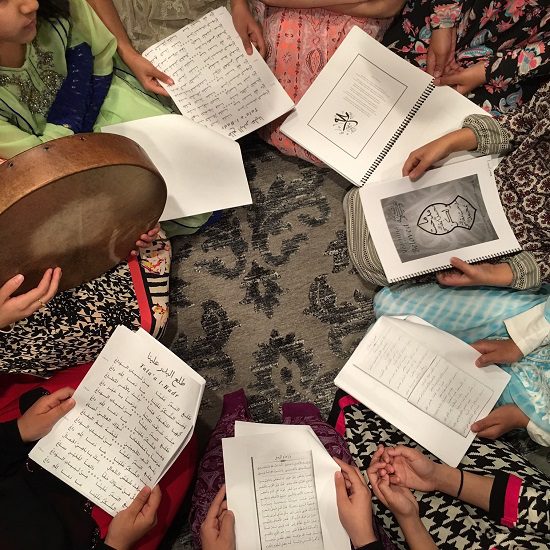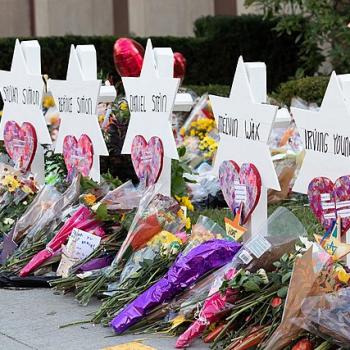 |
|
iMam meets Sheikh Google
|
Since 9/11, Salafism and political Islamic groups have been under continuous attack from Western politicians, commentators, academics and others for their linkages to terrorism and extremism. Leaving an assessment of this polemic aside for a moment, this critique had already been articulated in the nineties by many of the scholars serving the traditionalist movement, chiefly as a defence of their beleaguered position.
There have been broadly three traditionalist responses to this changed political circumstance:
(1) Some emphasised unity in the face of the war on terror, modulating their public critique of these movements, and even moving towards some kind of public entente on occasion. They did not want to be complicit in compromising the fundamental civic and human rights of those Muslims who had been their erstwhile sectarian rivals in the nineties. However they did still largely insist on a misguided theological component to extremism while acknowledging the central role of the war on terror in exacerbating it after 9/11. The nub of their argument is that theological intolerance lends itself more readily to violence than does more tolerant theology, and for that reason alone the issue should be kept on the agenda for discussion whatever the political circumstances.
(2) Other traditionalists (not the majority I believe) saw political opportunity in aligning themselves with the war on terror and attacking Salafis and Islamists as their political star was falling. Their public rhetoric is quite similar to the more hawkish language of Western politicians after 9/11. Their schadenfreude was unsurprising (if inexcusable) given that Islamists and Salafis often used to denigrate traditionalists intellectually and presume to represent them in the name of “unity” while marginalising them politically.
(3) A significant number of traditionalists were keen to stay out of public engagement altogether for various reasons that are outlined below.
The upshot of 9/11 has been that latent political differences within the traditionalist movement have become more manifest. There are many reasons for these differences but the most important is that the traditionalist movement has made a virtue of avoiding centralised and formal mass organisation as it believes this to be spiritually deleterious. Thus, it embodies more an orientation in religious thinking that loosely links together various Sufi orders and scholarly networks through specific styles of religious education, spiritual guidance and collective devotion.
In practical terms, how did these traditionalists manifest these internal tensions after 9/11? Many argued that traditionalists should stick to their core task of reviving traditional teachings in the West, a role that was defined in the nineties through deen-intensives, light-study courses, and sending Western Muslims to the great centres of the Muslim world to study and so on. Others saw an immediate need to spend time on public outreach, including interfaith, public speaking, media work, conferences, liaising and working with the authorities and so on. Many of the rank-and-file were uncomfortable with this shift and wanted to stick with what they knew, while others took it up as a necessary duty to preserve the public reputation of Muslim communities and to emphasize the need to make common cause against an extremism they saw as alien to Islam. Some of those who engaged have been politically opportunistic: after all, Islamist and Wahhabi bashing in public has become a viable career option, and not just for Muslims. This opportunism has partly been fed by a traditional deference towards political authority, which has always preferred symbolic political access and brokerage over more modern styles of democratic dissent.
The second reason why the traditionalist movement has changed in the noughties is that a large segment of young Muslims are looking for greater accommodation between their religious practice and liberal expectations within society at large. This is not merely a phenomenon to be found among traditionalists, rather such tensions can be found in nearly all, if not all, the groups and tendencies out there.
But within the traditionalist movement, a liberalising wing was and is manifested in three ways:
(1) Firstly the“liberal traditionalists” have put more emphasis upon the critique of political Islamic movements and Wahhabism than on adherence to the rigours of the Sharia in their personal lives. Among traditionalists, and indeed their scholars, there are significant differences over the validity of fiqh al-aqalliyat (a jurisprudence for Muslim minorities), the emphasis placed on the maqasid al-Sharia (the objectives of Islamic law), the desirability of adopting the madhhab al-taysir (the way of seeking ease in religion) and the emphasis made upon either the rukhsa (legal dispensation) or the azima (the strongest legal ruling on an issue within a legal school).
(2) Secondly many “liberal traditionalists” seek a personal ethics, a philosophy of Sufism, and have been uncomfortable with what they see as elements of cultishness in Sufi orders. It is a Sufism without spiritual guides (murshidin), spiritual initiation (bay`a) or the rigours of the mystical path (tazkiyat al-nafs). It is clear that a philosophy of Sufism may converge with individualised religion and a liberal sensibility, although this is not a given. In a different way, this philosophical Sufism shares some features in common with notions of tarbiya (moral rectification) found in Salafism and Islamism. It lacks the element of seeking to know the Divine (irfan) within tasawwuf. It is essentially the way of the jurists rather than that of the Sufis.
(3) Thirdly a critique of (Western) modernity, somewhat imbibed in intellectual quarters within the traditionalist movement and influenced either by perennialist, deconstructionist or conservative Christian analyses has often resolved itself into a personal philosophy. But it was held apart from the practical business of seeking to do well in the professions; in other words, this personal philosophy of anti-modernism did not harden into a practical form of isolationism. So for example, when the political crisis of 9/11 emerged, many traditionalists were aware that a concerted effort in public outreach to foster greater understanding was necessary. This outreach has involved taking up the liberal and secular language of the public sphere, in which the premises of the critique of Western modernity were, for all intents and purposes, largely submerged.
What binds traditionalism together today — with its liberalising or more conservative wings — is its commitment to the belief that the ulema retain a central role in interpreting religion authoritatively today. However, this commitment is now continually challenged by the tension between tradition and reason, empiricism and postmodernism in the West. Even our Abrahamic cousins, with longer experience, struggle with the dialectic that now faces Muslims of the West too.
Religious Authority in the Age of the Internet
The “competition for the mike”, as Sheikh Nuh Keller has pithily termed it, has been crucial in shaping religious authority among Muslims today. The mass media and the Internet have changed the way in which religious teachings are disseminated and indeed how religious disputes are projected and replicated to a vast audience. This is not new but arose two hundred years ago when the ulema began to write treatises addressed to the literate constituency of the Muslim masses through the medium of print. Since then the ulema have cultivated constituencies of opinion through mass media, and thus the disagreements of the ulema have a large role in defining the disagreements of their media constituencies, although it should also be said that the Muslim masses do exert some influence of their own in terms of their looking for guidance for how to handle changed circumstances through their encountering new customs, thoughts and ideas. The ability to ask questions is the power to set the agenda, which is very often done through the mass media as well.
The tension arises because the ulema can reach a much larger number of people through the mass media rather than on an individual face-to-face basis, and they all see the benefits of doing that. The same is true for all the lay Islamic movements as well. What this means is that there is a religious public sphere out there in which scholarly (and indeed non-scholarly) disagreements now get projected. Where the internet replicates the book, e.g. through treatises, essays, legal rulings and so on, then that form of internet intervention is much more familiar to the Islamic scholarly tradition. But the point is that in the age of print there used to be an editorial process and a relatively high economic cost to getting published, but now through digital printing and the internet anyone can publish on paper or electronically. Samizdat publishing has become the norm and not the exception. (In this I speak with the experience of a culprit.)
If all sorts of opinions are shaped and formed in the blogosphere for instance then how far should the ulema intervene to ask people to behave with decorum or even to arbitrate and get involved? As the ulema project their views on the internet in various ways, being a participant and a referee at the same time is a difficult dual role to play within the interactive part of the internet. Disputes take place all the time on the net between scholars, students of knowledge and those who follow scholarship and those who don’t. Disputation has gone from street corner discussions in the early nineties to all being preserved in glorious binary digital code, archived and available for retrieval and requoting. Who would have thought that?
Marshall McLuhan (1911-1980), seen as one of the seers of the mass media, considered that “the medium is the massage” by which he meant that all technologies were extensions of human senses and capabilities. The nature of this extension had the ability to alter the way that human beings think and act. Yet he was not a determinist either for he argued that “there is absolutely no inevitability as long as there is a willingness to contemplate what is happening” (The Medium is the Massage, New York, 1967, p. 25). Until recently the mass media was mostly linear and declarative, whereas arguably it is rapidly becoming individualised, interactive, demotic and non-linear. It engages all the senses and is working towards ever more complex simulacra of real life like Second Life.
Science fiction writers, most famously William Gibson in Neuromancer (1984), have imagined the future rise of a seamless machine-human interface when our cortexes would be on-line. This implies that much future social interaction will be disembodied. We still don’t understand how this will change societies over the long term. This is still a new world to which both the ulema and the Muslim masses are adjusting and attempting to formulate an etiquette for. And once a tool is available, especially one of this revolutionary power and sheer utility, people will use it. Yet legal rulings apply to the use made of a tool and not to the tool itself. It is thus through McLuhan’s “contemplation” of the nature of the medium itself that we might stave off somewhat the “inevitability” that Sheikh Google will lead the unified madhhab of the future in an alternate virtual reality universe that might well become our own.
Two Approaches to Unity
Leaving aside the nature of the internet, which may indeed be a major conduit through which to promote unity (as well as disunity), what kind of overall approach ought to inform intra-faith reconciliation? Here I am referring specifically to Sufis and Salafis, although the principles invoked would seem to have wider application. There seems to have been two approaches to fostering Islamic unity, one that is tried and tested and another that seems less likely to work. And God knows best.
The less effective way is to define primary and secondary issues in legal and credal issues from one approach as constituting the centre ground. The attempt to define this as being at the centre of our tradition only results in creating a new movement. Q-News once captured this well with the ironic headline: “Unite, but follow me”.
The more effective way is to stand firm on primary issues and to educate the masses in the matter of the etiquette of differing on secondary issues. Sheikh Ali Goma’a, the current Mufti of Egypt, said that there are approximately 1.25 million matters that have been the subject of legal rulings, and about 100 of these are agreed upon by all Muslims, being matters that are known by necessity to be part of religion. Any approach at reconciliation would do well to be informed by the approach outlined by Imam al-Ghazali’s Faysal al-Tafriqa, which, as people will know, is available in English translation. It reminds us that people will not cease to differ over rulings so long as they differ over the details of the principles of interpretation, particularly in the priority given to various hermeneutic methods. The literal sense has priority and other methods are applied if there is some evidential or logical reasons why the literal sense does not stand on its own.
The Amman Initiative, started in 2005, embodies this second approach and has the backing of a very wide spectrum of senior ulema across the world representing eight legal traditions.
There is a potential tension between affirming one’s own stance on secondary issues and indeed following an interpretative methodology in law or theology and working together for the common good with others. It is noticeable that avoiding differences can lead some to a sheer eclecticism in legal matters: this can confuse people, lending cultural credibility to a soft relativism, or the postmodern conviction that all differences are the same, i.e. they are all “just” differences. This focus leads to the avoidance of difference and controversy for its own sake and lends itself it to anti-intellectualism rather than to investigating matters whilst learning to handle a wider scope of difference.
In other words, in seeking a middle ground between Sufis and Salafis, points of agreement could be defined, but that minimum should not then define the scope of people’s commitments on secondary issues. Rather the scope for a wide variety of positions should remain. From a Sufi perspective, the fear is that if finding a common ground between Sufis and Salafis means dropping Ibn Arabi altogether then where would that leave one? Rather, Ibn Taymiyan and Akbarian approaches ought to remain fully represented and embodied and should seek to engage in a creative and genuine exchange in any process of reconciliation. They can part company civilly without necessarily agreeing but at least understanding the nature of their differences better at an usuli level. An historic example of this is the exchange between Ibn Taymiya and Ibn Ata’ullah al-Iskandari.
For the sake of unity is it right to drop practices or beliefs, which after all make up part of the spiritual methodology of Sufism, or to foster an understanding and an acceptance that others differ and not make that an issue? It can’t be that we drop positions because either ourselves or others are unable to apply the rules of ikhtilaf. Affirming one’s position doesn’t entail letting go of the possibility that one might be wrong and that the other might be right.
To put it another way. Sufis can’t be expected to endorse a position that would seek to make them agree that tasawwuf is an optional add-on, a bad innovation, or, worse, even a heresy. Rather Sufis would like anti-Sufis to accept that placing tasawwuf at the heart of our religion is a valid interpretive possibility even if they disagree with it. It can’t be ruled out of court as an interpretive possibility. Tasawwuf has enjoyed an august and widespread history of practice and support throughout the centuries of the umma’s spiritual legacy and remains a vibrant path for millions of Muslims today. In the final analysis, Muslims believe that God will inform us about our differing in the next life.
Three major issues in Sufi-Salafi reconciliation will be (i) the reclassification of some acts as fiqhi differences rather than as matters of basic aqida, as bid`a rather than as shirk, (ii) the recognition that there are primary and secondary issues in credal and legal matters and (iii) that the semantic approach adopted by some scholars of the East provides a means to diffuse differences between Asharis, Maturidis and Atharis over the description of God’s transcendence and immanence.
At the very least for Sufis and Salafis of the West (and elsewhere), a moratorium on polemical exchange, particularly over the internet, should be called for, matched by a process to get religious scholars on both sides to met regularly along the lines of the Amman Initiative. A minimal goal would be to take the heat out of differing so that it becomes that beneficial form of differing that increases knowledge and does not create rancour, hatred and division. It might also open up a way to work together towards common interests and goals that are shared in common. There is increasing recognition that there are structural challenges facing Muslim communities that are best met together. At the very least forging unity involves the recognition that Sufi polemics against the Salafis have taken on very different implications after 9/11 that should now be taken into account.
Yahya Birt is the national director of the City Circle (www.thecitycircle.com), an organisation that aims to foster community cohesion, public service, and a British Muslim identity. He is also a writer and research fellow at the Islamic Foundation in Leicester. An extended version of this article can be found at his popular blog (www.yahyabirt.com).











